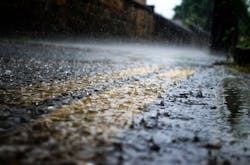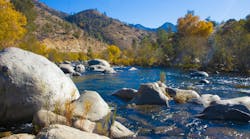SSC vs. TSS Wastewater | SWS
Within our growing storm water industry, there are some analytical issues that have significant impacts on how agencies go about accepting best management practices (BMPs) for approval, how claims are made about BMP performance and how receiving waters are impacted. One of the central issues is the definition of total suspended solids (TSS) and suspended sediment concentration (SSC).
SSC vs. TSS Wastewater
TSS is a method of analysis originally developed for wastewater. The analytical procedures are reasonably accurate for wastewater because the suspensions are relatively uniform and composed largely of neutrally buoyant organic matter.
TSS has been used in the storm water industry for years. It was logical to adopt it from the wastewater industry; however, there are some problems with the level of analysis as it applies to storm water runoff samples. These problems are generated by the nonhomogenous nature of storm water. Unlike wastewater, storm water samples contain a wide range of particle sizes ranging from colloids to coarse sands. The solids also can be highly mineral, with a high specific gravity, or highly organic, with a low specific gravity.
TSS Measurement
When evaluating BMP performance, the researcher takes an influent and effluent sample, measures the TSS of both and calculates the removal efficiency. Because TSS water is measured by subsampling, error is introduced when solids in the influent sample rapidly settle, thus adding a negative bias to the actual mass load and percent removal. SSC, on the other hand, uses a whole volume sample, which eliminates the error associated with subsampling and provides a more accurate measure.
On the surface, it seems more logical to use SSC water versus TSS, except the results do not always match water-quality requirements. For example, a single rain event transporting large amounts of heavier sand is given more weight in the final calculation than a typical storm event of less intensity. These more frequent events transport significantly high concentrations of fine sand, silts, clays and organic matter that tend to contain more biologically bioavailable pollutants. Over the course of a study, the results can be skewed. Even though mass-load removal rates look high, the water quality of the effluent is low and not providing what we need to protect our waterways. In addition, the SSC method does not usually work within the framework of regulatory requirements, as regulations specify TSS water as the measure, not SSC water.
What is most important is to set water quality goals and establish a solid scientific method that can be applied to different technologies and meet water-quality goals with a high level of confidence. If both TSS and SSC water are used as a measure of performance, consider the use of SSC water as an additional measure for BMPs that are focused on the removal of heavy sediment loads such as road sand and grit. This could be constituted as a measure for hydrodynamic separator technologies, while TSS is used for filtration.


